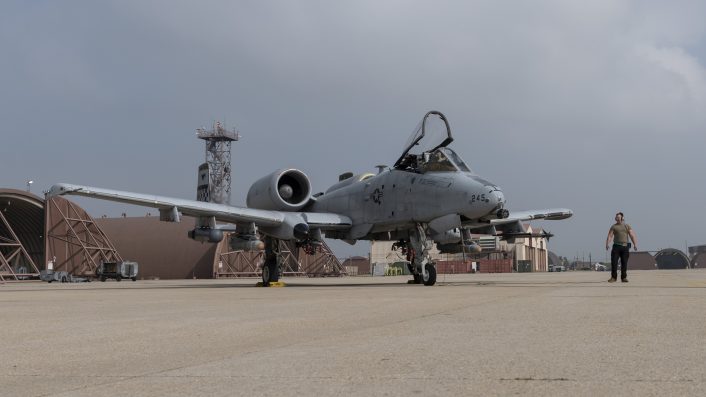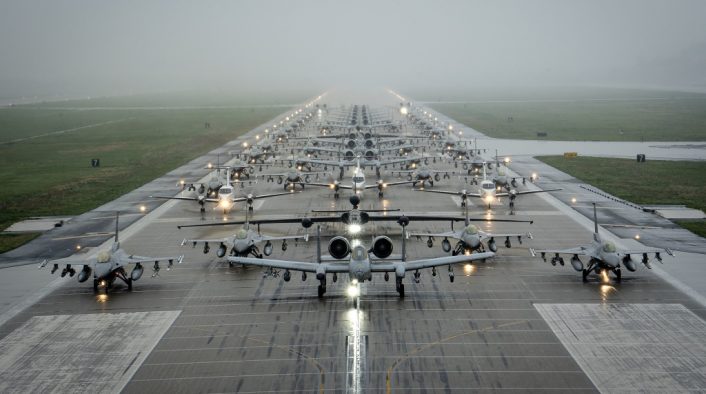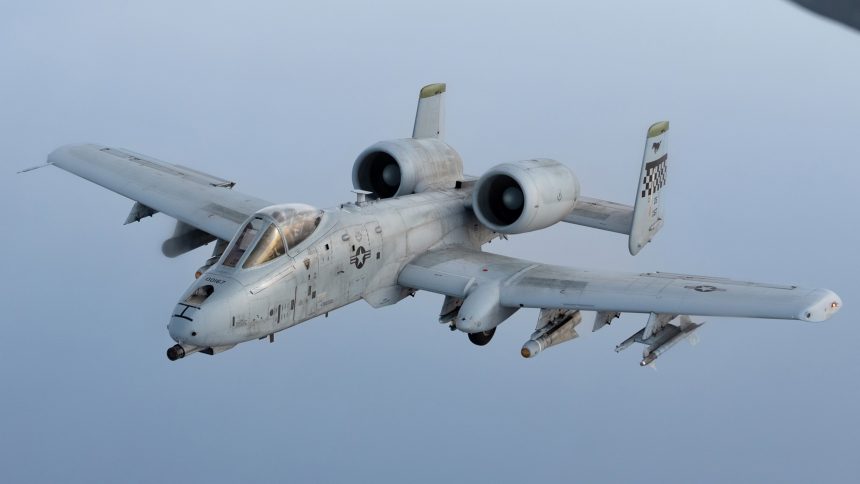The service says it will transition away from the A-10C in Korea to focus on advancing fourth-generation fighter jet upgrades and enhancing fourth- and fifth-generation aircraft integration.
The U.S. Air Force has announced that it will begin to transition away from the A-10C Thunderbolt II in South Korea in January 2025. The move, which has been defined as a significant phase of the service’s modernization strategy in fiscal year 2025, is being made in favor of advancing fourth-generation fighter jet upgrades and enhancing fourth- and fifth-generation aircraft integration.
The modernization plan was announced by the Department of Defense on July 3, 2024, with the goal of deterring Chinese aggression in the region and strengthening forces in Japan. The Air Force further mentioned that the modernization effort seeks to ensure peace and stability in the Indo-Pacific region, including the Korean peninsula, through state-of-the-art aircraft.
With the latest press release, focused on the A-10C, the service mentioned the new strategy bolsters deterrence against North Korea and reaffirms the ironclad U.S. security commitment to the South Korea-U.S. alliance by strengthening South Korean and U.S. combined defense.
The modernization of the Seventh Air Force
The press release of Nov. 12, 2024, says that, starting in January 2025, the 25th Fighter Squadron at Osan Air Base will begin a phased withdrawal of its 24 A-10 aircraft, with completion expected by the end of fiscal year 2025. We reached out to PACAF and 7AF for a comment regarding the future of the 25th FS, but have not yet received a response.
As of now, there is no info regarding a new aircraft type assigned to the unit. On the other hand, the 25th FS sister unit, the 36th FS, is currently part of a year-long test to optimize combat capability and training effectiveness with a larger number of F-16 aircraft assigned to the “Super Squadron”. The unit received nine F-16s, bringing the total of its aircraft from 22 to 31 F-16s, which however cannot replace the 24 A-10s.

Meanwhile, the Seventh Air Force F-16s are undergoing a series of avionics system upgrades, “bringing the aircraft closer to fifth-generation capabilities as they increase both the survivability and accuracy of the weapon system.” The goal is to have the F-16 better integrate with the new aircraft being introduced in service.
Precisely, the upgrade mentioned is the Post Block Integration Team (PoBIT) project, which includes up to 22 modifications designed to improve lethality and ensure the fourth-generation fighter remains effective in meeting current and future threats. The 7th AF, which includes both Osan’s 51st Fighter Wing and Kunsan’s 8th Fighter Wing, received the first upgraded F-16C Block 40 in Apr. 2023.
“The advancement of our F-16 upgrades and innovation through our ongoing super squadron test at Osan (AB) show our dedication to evolving and adapting our forces to meet the demands of the 21st century,” said Lt. Gen. David Iverson, Seventh Air Force commander and U.S. Forces Korea deputy commander. “We will continue to deliver overwhelming, unmatched combat airpower, ensuring that our defenses remain effective in safeguarding peace and security in the Indo-Pacific.”
The modernization of the PACAF units
The withdrawal of the A-10C and the upgrade of the F-16C are only two of the modernization efforts which the U.S. Air Force is planning in the Indo-Pacific region. The others involve the Pacific Air Forces (PACAF) units based in Japan.
Misawa Air Base, home of the 35th Fighter Wing’s 13th and 14th Fighter Squadrons, currently operates a suppression of enemy air defenses (SEAD) mission with the F-16 Fighting Falcon. The Wing is expected to continue to fly their SEAD mission with the F-35A. The Department of Defense aims to replace 36 F-16C/Ds with 48 F-35As.
Kadena Air Base, home of the 18th Wing’s 44th and 67th Fighter Squadrons, most recently flew in an air superiority role with the F-15C/D Eagle. Both squadrons were scheduled to retire their F-15s beginning in 2022 with no replacement named until now. The base is set to replace 48 Eagles with 36 F-15EX Eagle II jets.

“The F-16s, with their upgraded systems, will continue to deliver reliable and flexible combat capabilities,” said the latest press release. “Within the region, the F-35, with its stealth capabilities and advanced sensors, will provide a significant edge in situational awareness and strike precision. The F-15EX, known for its advanced avionics and payload capacity, will enhance air-to-air and air-to-ground combat effectiveness.”
As a sidenote, it should be mentioned that the air-to-ground capabilities of the F-15EX are currently limited as the aircraft is being acquired without its conformal fuel tanks (CFT). The lack of CFTs, in fact, will limit the number of external pods and air-to-ground weapons the F-15EX will be able to employ.
“By introducing advanced fourth and fifth-generation aircraft like our upgraded F-16 Fighting Falcons, along with F-35 Lightning IIs and F-15EX Eagle IIs in the Pacific region, we are significantly enhancing our overall air combat capabilities in the Korean theater,” added Iverson. “These aircraft bring unparalleled multi-role versatility, advanced stealth features, and superior operational range, positioning us to effectively counter modern threats and support our regional allies.”
Another aspect which should be noted, however, is that the timing for the arrival of these new aircraft remains unclear. In fact, speaking about the F-15EX, three U.S.-based operational units are also awaiting delivery, suggesting that Kadena might experience a delay or receive its new jets at a slower pace.
On the other hand, the F-35s is currently being delivered to new units, but hundreds of them are already in service. If needed, the Air Force might transfer some aircraft on loan to the units in Misawa as they wait for their own, similarly to what was done with the 301st Fighter Wing, the first Air Force Reserve Command’s first stand-alone F-35 wing, which has some aircraft on loan from Hill AFB as it wait for its own.









